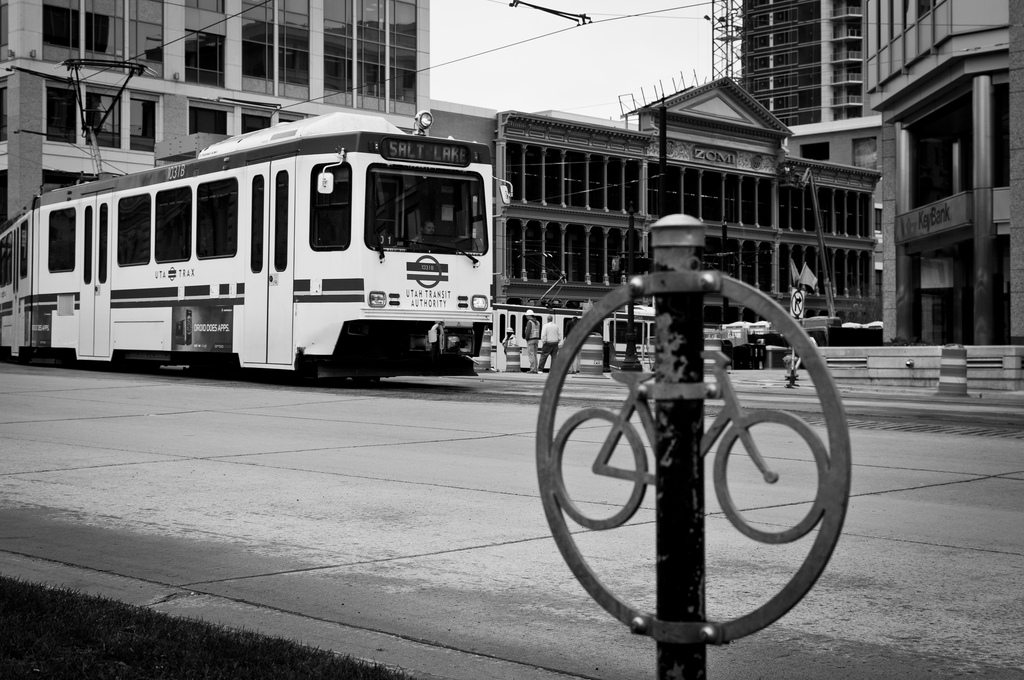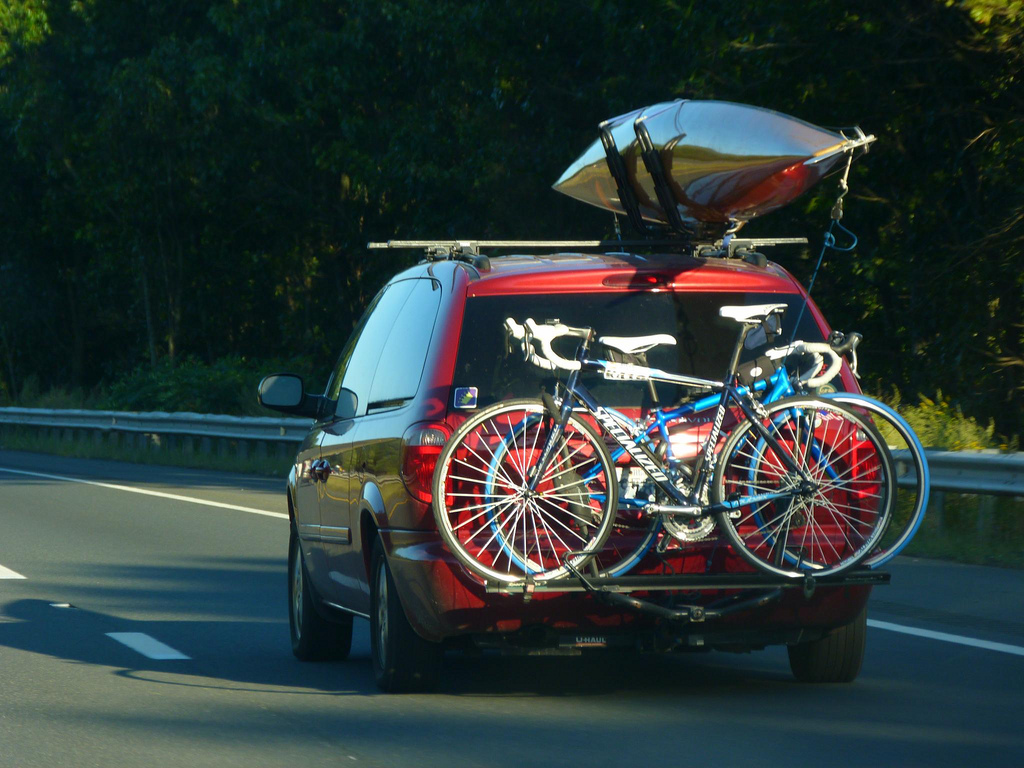As great as it would be to cycle everywhere, sometimes other forms of transportation are necessary. Transporting bicycles can be a tricky situation, whether it’s with a plane, a train, or the family station wagon. Remembering a few tips about taking your bike along for the ride can make your travel much less stressful.
Transporting Bicycles On a Train
The popularity of public transit is growing across the country, and more and more people are riding the train to work. This poses the question: how are they getting to the train station in the first place? For many cyclists, a combo-commute with a bike and train is very appealing. However, limited space on public transit can sometimes make this complicated. The Utah Transit Authority offers some great services for people commuting by bike and train:
- Bike Locker Rentals
- Cyclists can rent a bike locker at most TRAX and FrontRunner stations for an annual fee of $70.
- A locker can help ease any anxiety you may have about leaving your bike out all day while at work.
- You will be given a key to your locker (a $30, refundable deposit is required for this key).
- Bike Racks (Outside and Inside the Train)
- The UTA recently started to install vertical bike racks inside some TRAX cars.
- These racks will become more widely available over time.
- Most TRAX and FrontRunner stations have racks available. You need to provide your own lock.
- The UTA recently started to install vertical bike racks inside some TRAX cars.
- Transporting Bicycles On Trains is Permitted
- Just be sure not to block any doors or other areas with heavy foot traffic.
- Riding bicycles on train platforms is prohibited.
Transporting Bicycles In or On a Car
Car bike racks are probably the most common means of transporting bicycles. Since trunks and backseats often have limited space (or are occupied by people), external racks are a great option:
- Roof racks may be the most popular, for a variety of reasons. Car doors and trunks are left unobstructed and theft is far more unlikely.
- Trunk racks are easy-to-use and more accessible than roof racks, but leave your bike more exposed. In addition to making a thief’s job easier, a trunk rack may cause your bike to bear the brunt of a rear-end collision.
- Hitch racks offer many of the same pros and cons of trunk racks. They can be some of the most stable racks, however, they can also be some of the most expensive.
Storing your bike in the trunk or backseat is an option in some instances, but usually will require you to remove one or both wheels in order to make room.
Transporting Bicycles On a Plane
Since bikes are somewhat large and oddly-shaped, some airlines may charge you an extra fee to take it with you on a flight. Your biggest worry should be your bike’s safety. Airplane cargo holds aren’t always the friendliest places. Here are some tips on making sure your two-wheeled luggage stays intact:
- Before you book a flight, speak with the airline you’re thinking about using and make sure you understand their policies on bikes.
- Buy a protective case or bag for your bike. These are a proactive way for you to avoid damage to your bike.
- Make sure you follow the necessary size and weight guidelines of the airline.
Diversifying your commute or travel options can be a rewarding move. However, taking your bike with you on trains, planes, or cars has some risks. If your bike is damaged while moving from point A to point B, you may be able to recover your losses. As Utah’s Bicycle Lawyers, we strive to protect the rights of the cycling community. Contact us today and review your options free-of-charge.


